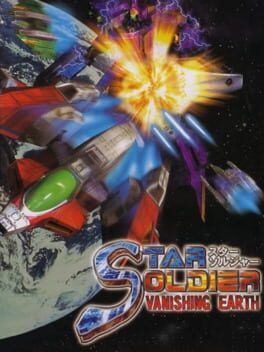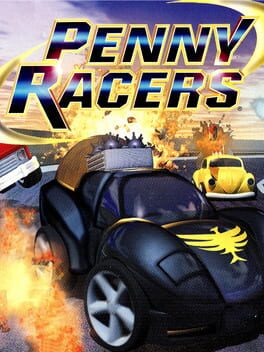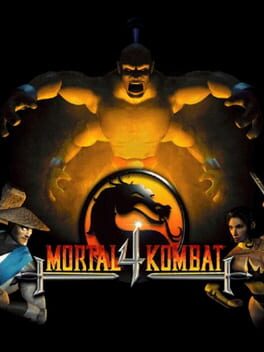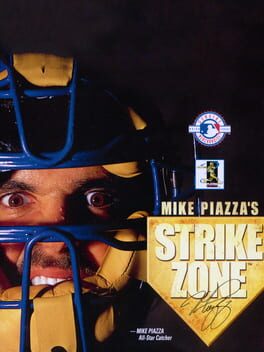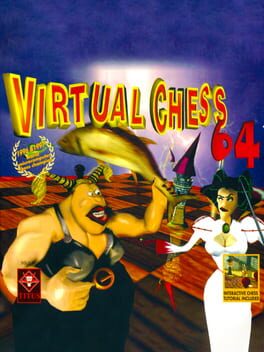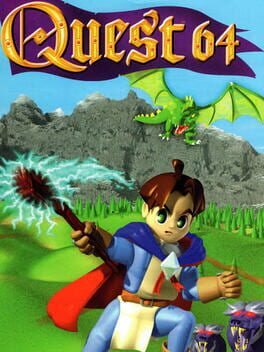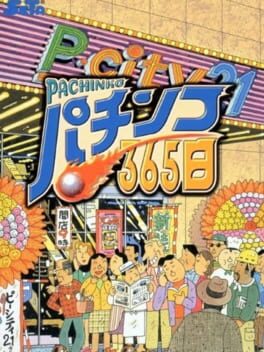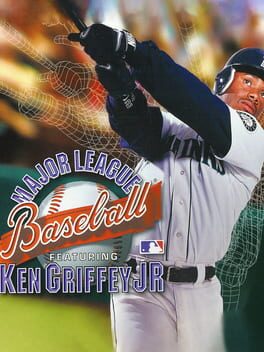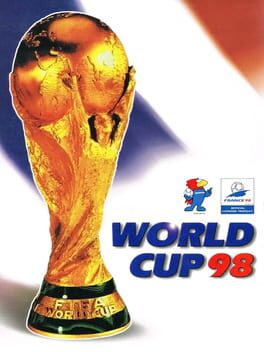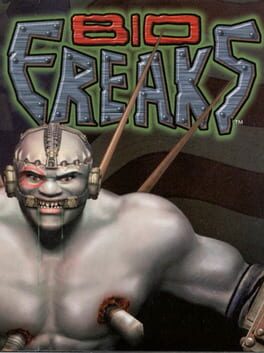Cube1701
Star Soldier: Vanishing Earth is a very traditional style sci-fi scrolling shooter. While it features some nice 3D graphics, it doesn’t try to utilise 3D in its gameplay or camera usage, it just keeps things simple.
However, keeping things simple works for this genre. You can pick between a few ships that have different weapons – all of which can be upgraded by collecting power-up, which level down if you get destroyed. Everything is fast, smooth and feels polished.
Outside of the main mode – which has some hidden paths to unlock bonus missions – there’s also a couple of timed modes for quick high score challenges. It’s a decent example of its genre.
However, keeping things simple works for this genre. You can pick between a few ships that have different weapons – all of which can be upgraded by collecting power-up, which level down if you get destroyed. Everything is fast, smooth and feels polished.
Outside of the main mode – which has some hidden paths to unlock bonus missions – there’s also a couple of timed modes for quick high score challenges. It’s a decent example of its genre.
1998
Known as Choro-Q in Japan, this racing game is base on a series of pullback toy cars. The all have a cute deformed style and the racing game brings that to life, with upgradable cars and weapons to use against other racers.
The customisation and upgrades are a key part of Penny Racers. There’s a lot of different vehicles to choose from and you can alter the with colours and different components – some change your stats and others alter your appearance. As you finish races, the top three racers can steal components from the bottom three racers.
While the game is cute and charming, the actual racing is unfortunately not much fun. It takes ages to get up to full speed and other racers coming near you will knock you about. I also found my car to just roll over a lot, particularly on long turns and I really couldn’t work out what I was doing wrong. I eventually learned to anticipate the rolls so I could plan the quick turns and performed fairly well – unless I got stuck in the middle of the pack and bashed about by others.
There’s also a nice track editor in the game, with a few options for different kinds of straights, turns and curves. Unfortunately, there’s only one (fairly hideous) style to the track, so they’ll all look the same, but it’s a really nice feature.
I wish I could enjoy Penny Racers more than I did, the setting is adorable and I like some of the ideas. Hopefully the sequel will sort out some of the issues.
The customisation and upgrades are a key part of Penny Racers. There’s a lot of different vehicles to choose from and you can alter the with colours and different components – some change your stats and others alter your appearance. As you finish races, the top three racers can steal components from the bottom three racers.
While the game is cute and charming, the actual racing is unfortunately not much fun. It takes ages to get up to full speed and other racers coming near you will knock you about. I also found my car to just roll over a lot, particularly on long turns and I really couldn’t work out what I was doing wrong. I eventually learned to anticipate the rolls so I could plan the quick turns and performed fairly well – unless I got stuck in the middle of the pack and bashed about by others.
There’s also a nice track editor in the game, with a few options for different kinds of straights, turns and curves. Unfortunately, there’s only one (fairly hideous) style to the track, so they’ll all look the same, but it’s a really nice feature.
I wish I could enjoy Penny Racers more than I did, the setting is adorable and I like some of the ideas. Hopefully the sequel will sort out some of the issues.
1997
Developed by Midway and Avalanche (the ones who made the Tak games and Hogwarts Legacy) is another port of an arcade racer, this one has you driving large 4×4 trucks across some very bumpy environments.
Off Road Challenge is very clearly an immensely ugly game. Everything looks low quality and messy and there’s a load of pop-in and gaps in the world. The game does mange to make its 6 tracks feel distinct (there’s also two bonus ones which look similar to some of those), but when none of it looks good, that doesn’t matter much.
However, even though the game is nowhere near good, I found it to be rather enjoyable. The handling is surprisingly good – one of the most responsive I’ve encountered in a car game on the N64 and there’s such a great sense of fun with the game. Everything surrounding this is bad, but the core driving is just entertaining.
One bizarre thing is that your car starts off as not good enough to win, you need to collect money found in the level (and awarded if you place high) to buy upgrades for your car, which then help you out in later races. One huge problem – if you leave the game to swap vehicle or turn the game off, all these upgrades are on and you need to do a few races to catch up again.
It’s ugly and has some rather odd features, but it’s still kind of fun.
Off Road Challenge is very clearly an immensely ugly game. Everything looks low quality and messy and there’s a load of pop-in and gaps in the world. The game does mange to make its 6 tracks feel distinct (there’s also two bonus ones which look similar to some of those), but when none of it looks good, that doesn’t matter much.
However, even though the game is nowhere near good, I found it to be rather enjoyable. The handling is surprisingly good – one of the most responsive I’ve encountered in a car game on the N64 and there’s such a great sense of fun with the game. Everything surrounding this is bad, but the core driving is just entertaining.
One bizarre thing is that your car starts off as not good enough to win, you need to collect money found in the level (and awarded if you place high) to buy upgrades for your car, which then help you out in later races. One huge problem – if you leave the game to swap vehicle or turn the game off, all these upgrades are on and you need to do a few races to catch up again.
It’s ugly and has some rather odd features, but it’s still kind of fun.
1996
While still nowhere near a good game, Cruis’n World has significant improvements over Cruis’n USA. It’s still an arcade-style racing game with a lot of courses, although this time it’s based across the world instead of just the USA.
This gives us a much bigger array of visual variety. The visuals of the levels are very stereotypical, but it means the locations are very easy to identify and they all stand out from each other. The track design is also much more varied and isn’t almost entirely 4-lane roads. With the amount of tracks – including one on the moon – it’s certainly one of the stronger N64 racing games when it comes to tracks. There’s also a really nice variety in cars, mostly knock-offs of real ones, but also fun ones like a double-decker.
Unfortunately, it’s all let down by the handling. One slight touch of the analogue stick and you swerve wildly across the road, with a drift that makes it even harder to control your vehicle. Winning is also very difficult because the other racers are so bad – they’ll often crash and you’ll end up in the pile up (well, more a bunch of cars spinning wildly in the air) as they block the road, letting the cars up front get ahead in such a way that you can be perfect for the rest of the race and not be able to catch up.
I got fed up of this pretty quickly and resorted to using cheats. Strangely, the only track I won legitimately was one of the “expert” ones. It’s a shame because with better handling, it would be a very enjoyable game.
This gives us a much bigger array of visual variety. The visuals of the levels are very stereotypical, but it means the locations are very easy to identify and they all stand out from each other. The track design is also much more varied and isn’t almost entirely 4-lane roads. With the amount of tracks – including one on the moon – it’s certainly one of the stronger N64 racing games when it comes to tracks. There’s also a really nice variety in cars, mostly knock-offs of real ones, but also fun ones like a double-decker.
Unfortunately, it’s all let down by the handling. One slight touch of the analogue stick and you swerve wildly across the road, with a drift that makes it even harder to control your vehicle. Winning is also very difficult because the other racers are so bad – they’ll often crash and you’ll end up in the pile up (well, more a bunch of cars spinning wildly in the air) as they block the road, letting the cars up front get ahead in such a way that you can be perfect for the rest of the race and not be able to catch up.
I got fed up of this pretty quickly and resorted to using cheats. Strangely, the only track I won legitimately was one of the “expert” ones. It’s a shame because with better handling, it would be a very enjoyable game.
1997
The big Mortal Kombat game for this generation of consoles, and this one brings the graphics into full 3D. After experimenting with a few styles of graphics and gameplay with their earlier N64 fighting games, Mortal Kombat 4 settles on polygon models that manage to capture the spirit of the 2D sprites pretty well.
The gameplay also feels quite solid to me. It sticks to working from a 2D point of view with some slight 3D movement from dodging. One new feature is the ability to use items like rocks to throw at opponents, and each person can bring out a weapon with a special move (which the opponent can also use if dropped).
There’s a few modes such as an endurance mode fighting random opponents, the standard arcade mode and some tournament options for multiplayer. The practice mode also gives you a move list, but this is only on a static screen and you can’t pin one to try.
This seems like the N64’s most solid fighter so far, although it doesn’t try to do anything special either.
The gameplay also feels quite solid to me. It sticks to working from a 2D point of view with some slight 3D movement from dodging. One new feature is the ability to use items like rocks to throw at opponents, and each person can bring out a weapon with a special move (which the opponent can also use if dropped).
There’s a few modes such as an endurance mode fighting random opponents, the standard arcade mode and some tournament options for multiplayer. The practice mode also gives you a move list, but this is only on a static screen and you can’t pin one to try.
This seems like the N64’s most solid fighter so far, although it doesn’t try to do anything special either.
Not knowing the name Mike Piazza, the name made me think of bowling. Unfortunately, this is another baseball game, and by far the worst one so far on the N64. It’s definitely not helped by the horrific and extremely ugly graphics, either.
In Strike Zone, there’s no indicator for aiming the bat. I’m not entirely sure you actually able to aim as I really couldn’t tell any difference when moving the analogue stick. This doesn’t help with hitting it though, as the strange angle used makes it very difficult to judge where the ball is.
Fielding is also a mess, as it doesn’t change to the closest fielder until far too late and it feels like you’re just yelling at the players rather than directly controlling them.
There is a cheat where you can turn almost any hit into an instant home run, and the game can be amusing to see the unrealistic distances it produces.
In Strike Zone, there’s no indicator for aiming the bat. I’m not entirely sure you actually able to aim as I really couldn’t tell any difference when moving the analogue stick. This doesn’t help with hitting it though, as the strange angle used makes it very difficult to judge where the ball is.
Fielding is also a mess, as it doesn’t change to the closest fielder until far too late and it feels like you’re just yelling at the players rather than directly controlling them.
There is a cheat where you can turn almost any hit into an instant home run, and the game can be amusing to see the unrealistic distances it produces.
1998
I wasn’t expecting much from Virtual Chess as it’s just chess, but at least you can’t mess up chess – or so I thought. Against all odds, Titus have managed to achieve the impossible and create a chess game that looks bad and controls poorly.
The analogue stick or d-pad move the cursor, but way, way too fast so you need to perform the quickest tap or move the stick immensely slightly. With the 3D view, you expect the c-buttons to control the camera and they do – at least two of them do. c-right spins the board right while c-left spins the board up. It’s impossible to find a good camera angle and adjusting is itself a big pain.
When a piece is taken, you see the pieces fighting (similar to Battle Chess), only the designs of al the characters are absolutely hideous and carry no charm whatsoever. As it doesn’t happen with the other pieces on show, it also feels completely disjointed from the main game.
You can choose a 2D board. I turned it on and was presented with a really baffling design. I checked the options and found no way to change it – although I eventually figured out that c-left and c-right can change the the look of the board and pieces.
Now, there is one aspect that Virtual Chess is competent in, and that’s playing chess. The problem is that it’s too good. While it’s got 17 levels of difficulty, the first beginner level will trounce most people – especially if they’re using the 3D view that makes it very difficult to judge how pieces can move.
There are plenty of good chess games, but this is just trash. I’m amazed that it got good reviews.
The analogue stick or d-pad move the cursor, but way, way too fast so you need to perform the quickest tap or move the stick immensely slightly. With the 3D view, you expect the c-buttons to control the camera and they do – at least two of them do. c-right spins the board right while c-left spins the board up. It’s impossible to find a good camera angle and adjusting is itself a big pain.
When a piece is taken, you see the pieces fighting (similar to Battle Chess), only the designs of al the characters are absolutely hideous and carry no charm whatsoever. As it doesn’t happen with the other pieces on show, it also feels completely disjointed from the main game.
You can choose a 2D board. I turned it on and was presented with a really baffling design. I checked the options and found no way to change it – although I eventually figured out that c-left and c-right can change the the look of the board and pieces.
Now, there is one aspect that Virtual Chess is competent in, and that’s playing chess. The problem is that it’s too good. While it’s got 17 levels of difficulty, the first beginner level will trounce most people – especially if they’re using the 3D view that makes it very difficult to judge how pieces can move.
There are plenty of good chess games, but this is just trash. I’m amazed that it got good reviews.
1998
There’s a lot of curious things about the Quest series. This game was given different names in different regions. In North America, it was the very generic Quest 64. In Europe is was the rather meaningless Holy Magic Century and in Japan it was Eltale Monsters (I think Eltale Book would have worked better). Despite being a JRPG, it also came out in Japan last.
Quest got a spin-off in the form of a Mr. Do clone on Game Boy Color called Quest: Fantasy Challenge in the USA and, oddly, Holy Magic Century in Europe (it wasn’t released in Japan) and then a remake of the original game on Game Boy Colour (with an expanded story) called Quest: Brian’s Journey in the USA and Elemental Tale – Jack’s Great Adventure: Satan’s Counterattack in Japan (this one wasn’t released in Europe).
As for Quest 64, the game itself is also interesting as it seems like a great starting point for a game, but it feels like it isn’t finished. It works fine and isn’t glitchy, it’s just there isn’t a lot to it. The idea behind the story is interesting, but it isn’t told well. It’s very easy to lose track of what you’re supposed to be doing due to lack of context, and NPCs rarely have anything interesting to say.
The combat has some interesting ideas, too. It’s turn-based but you move around in the actual game world. You can move around within a circle (which is more of a circle in the Japanese version) to position yourself and select an attack. When enemies attack you have a bit of movement to try and dodge.
You collect spirits in four elements: fire, wind, water and earth (no heart) and as you get more, you unlock more abilities. There are three “levels” of attack but in each new “level” you can mix in another element for a wide variety of spells. Unfortunately, there are just a couple of attacks that are far better than others.
By far the biggest issue with the combat is the random encounter system, as the amount you get is extremely overboard. You can be drawn into a new battle immediately after one ends and, other than trying to break the game by hugging walls (or using a Gameshark code), there’s no proper way to avoid battles.
What doesn’t help is that a lot of battles won’t reward you with anything, as the game won’t give you an item if you already have one of them in your inventory. You’ll get tired of the random encounters before the end of the first area.
There’s plenty to like about Holy Quest Monsters, but also a lot to hate about it. It feels like the developers had a lot of ambitions but had to tone it back during development. It has a lot of interesting ideas, it just doesn’t fully use them.
Quest got a spin-off in the form of a Mr. Do clone on Game Boy Color called Quest: Fantasy Challenge in the USA and, oddly, Holy Magic Century in Europe (it wasn’t released in Japan) and then a remake of the original game on Game Boy Colour (with an expanded story) called Quest: Brian’s Journey in the USA and Elemental Tale – Jack’s Great Adventure: Satan’s Counterattack in Japan (this one wasn’t released in Europe).
As for Quest 64, the game itself is also interesting as it seems like a great starting point for a game, but it feels like it isn’t finished. It works fine and isn’t glitchy, it’s just there isn’t a lot to it. The idea behind the story is interesting, but it isn’t told well. It’s very easy to lose track of what you’re supposed to be doing due to lack of context, and NPCs rarely have anything interesting to say.
The combat has some interesting ideas, too. It’s turn-based but you move around in the actual game world. You can move around within a circle (which is more of a circle in the Japanese version) to position yourself and select an attack. When enemies attack you have a bit of movement to try and dodge.
You collect spirits in four elements: fire, wind, water and earth (no heart) and as you get more, you unlock more abilities. There are three “levels” of attack but in each new “level” you can mix in another element for a wide variety of spells. Unfortunately, there are just a couple of attacks that are far better than others.
By far the biggest issue with the combat is the random encounter system, as the amount you get is extremely overboard. You can be drawn into a new battle immediately after one ends and, other than trying to break the game by hugging walls (or using a Gameshark code), there’s no proper way to avoid battles.
What doesn’t help is that a lot of battles won’t reward you with anything, as the game won’t give you an item if you already have one of them in your inventory. You’ll get tired of the random encounters before the end of the first area.
There’s plenty to like about Holy Quest Monsters, but also a lot to hate about it. It feels like the developers had a lot of ambitions but had to tone it back during development. It has a lot of interesting ideas, it just doesn’t fully use them.
ISS vs FIFA was a big debate for a while, with 1998 probably being the biggest year for the argument. N64 Magazine clearly preferred ISS, but for me, I enjoyed FIFA 98 more. I do think I know the main reason why people prefer each one, as while they seem the same from a distance, they both have slightly different targets. FIFA is more about casual fun, while ISS is more geared towards providing a more tactical experience.
Which means that it isn’t a case of which one is better, but rather what kind of game you want. ISS 98 is a marginal improvement from ISS 64, focusing on the World Cup. In Japan, it had an official World Cup branding, but still not player names (other than the Japanese squad), but is the same game.
You do get a new set of scenarios, so if you liked those, these are the main new thing in this version compared to the previous year.
Which means that it isn’t a case of which one is better, but rather what kind of game you want. ISS 98 is a marginal improvement from ISS 64, focusing on the World Cup. In Japan, it had an official World Cup branding, but still not player names (other than the Japanese squad), but is the same game.
You do get a new set of scenarios, so if you liked those, these are the main new thing in this version compared to the previous year.
1998
As Tetris set the standard for puzzle video games, other puzzle games try to have names similar to it. A water-based puzzle game? Of course it has to be named Wetrix. Wetrix is all about keeping water from falling off your square “island”, raiding the environment to keep it contained.
Different “blocks” will fall down from the screen. Most of these are upwards arrows which will raise the land in that shape, along with water to fill up the enclosed areas you make. The goal is to keep as much water contained as possible, as if to much falls off the sides, you’ll get Game Over.
There are other kinds of “blocks” as well. Down arrows will reduce the level of the land, bombs will blow up holes in the island that you’ll need to repair (on that note, don’t try to launch a bomb down a hole, the game will punish you for it), ice to freeze water and fireballs to get rid of some water.
I can definitely see the appeal of Wetrix, but I really could not figure out how to do well at the game. There’s a bunch of different modes, including one where you can change settings to make the game even more difficult.
It’s not for me, but it’s a solidly made game.
Different “blocks” will fall down from the screen. Most of these are upwards arrows which will raise the land in that shape, along with water to fill up the enclosed areas you make. The goal is to keep as much water contained as possible, as if to much falls off the sides, you’ll get Game Over.
There are other kinds of “blocks” as well. Down arrows will reduce the level of the land, bombs will blow up holes in the island that you’ll need to repair (on that note, don’t try to launch a bomb down a hole, the game will punish you for it), ice to freeze water and fireballs to get rid of some water.
I can definitely see the appeal of Wetrix, but I really could not figure out how to do well at the game. There’s a bunch of different modes, including one where you can change settings to make the game even more difficult.
It’s not for me, but it’s a solidly made game.
1998
Another Pachinko game. While I still have zero interest in the Japanese hybrid of slot machines and 10p machines, this one at least seems competently made. You can properly walk around the three Pachinko parlours to find machines and they look alright. You can also talk to the guests, who have various things to say about Pachinko.
The pachinko is still just pachinko, but the a and b buttons now increase/decrease the ball release lever, actually giving you control over how the balls are fired. There are five machines, one of them being an “old style” one.
In this one, you manually launch the balls into the machine, instead of the standard autofire ones. It adds a bit of variety.
The goal of the game is to play over the course of one year (with a day being sped up) to try and earn as much money as you can.
The pachinko is still just pachinko, but the a and b buttons now increase/decrease the ball release lever, actually giving you control over how the balls are fired. There are five machines, one of them being an “old style” one.
In this one, you manually launch the balls into the machine, instead of the standard autofire ones. It adds a bit of variety.
The goal of the game is to play over the course of one year (with a day being sped up) to try and earn as much money as you can.
With this being published by Nintendo, you would hope for a fun and solid portrayal of Baseball, similar to how NBA Courtside did the same for Basketball. Unfortunately, while this does go for a more arcade-style format, it’s rather clunky and messy by comparison.
This features a similar system than most of the other N64 baseball games, and this seems to be the easiest to hit the ball – but still almost impossible to actually do anything with it, struggling to land a hit that doesn’t go straight to an opponent, while the CPU hit a home run first try.
One thing I do like is that the games seem snappier and go by much quicker, so you can get through a match in a decent time, but this is just an average baseball game.
This features a similar system than most of the other N64 baseball games, and this seems to be the easiest to hit the ball – but still almost impossible to actually do anything with it, struggling to land a hit that doesn’t go straight to an opponent, while the CPU hit a home run first try.
One thing I do like is that the games seem snappier and go by much quicker, so you can get through a match in a decent time, but this is just an average baseball game.
1998
World Cup 98 is simply FIFA Road to World Cup 98 with some minor gameplay changes and a ton of stuff removed. While the previous game had every official international team, plus teams from multiple leagues (such as the Premiership), this just has the teams that qualified for the world cup (plus 8 extras).
The gameplay has some minor tweaks that isn’t as noticeable and one of the fun parts of the previous game – the indoor 5-a-side – is also gone. This is just the previous game with fewer stuff.
Interestingly, the FIFA branding is missing (even though the World Cup is a FIFA tournament) – I wonder if they thought that not having the FIFA name would make people think that this is another competitor to try out.
The gameplay has some minor tweaks that isn’t as noticeable and one of the fun parts of the previous game – the indoor 5-a-side – is also gone. This is just the previous game with fewer stuff.
Interestingly, the FIFA branding is missing (even though the World Cup is a FIFA tournament) – I wonder if they thought that not having the FIFA name would make people think that this is another competitor to try out.
1998
I really had no idea that the N64 had so many people trying to claim the title of being the N64’s fighting game. In BioFREAKS, the concept is that in a dystopian future, people have been modified into grotesque monsters (although, predictably, the female characters aren’t modified as much). The only notable character to me was a fish monster, although he oddly throws up blood before and after matches.
A couple of things set BioFREAKS apart. First is the hover, where you can fly. This doesn’t seem that well integrated into the fighting and is mainly used to making distance, as this fighting game relies a lot on projectile attacks, which don’t even need special attacks to use. Levels are a 3D but not that interesting, although a couple do make use of the flying.
Do enough damage to an opponent and they may lose limbs and lose some of their attacks. I think this is supposed to look gruesome (as with the whole game), but it all comes across as laughably silly, unlike the gore in Mortal Kombat.
This isn’t bad, but it’s just another fighting game on the N64.
A couple of things set BioFREAKS apart. First is the hover, where you can fly. This doesn’t seem that well integrated into the fighting and is mainly used to making distance, as this fighting game relies a lot on projectile attacks, which don’t even need special attacks to use. Levels are a 3D but not that interesting, although a couple do make use of the flying.
Do enough damage to an opponent and they may lose limbs and lose some of their attacks. I think this is supposed to look gruesome (as with the whole game), but it all comes across as laughably silly, unlike the gore in Mortal Kombat.
This isn’t bad, but it’s just another fighting game on the N64.
This is an “improved” and updated version of ClayFighter 63⅓ featuring some gameplay changes and new characters. It was exclusive to Blockbusters, the small amount of copies being sold after the promotion ended, making it one of the rarest N64 games. That said, everything good about the game you see before the main menu: the game’s intro is a nice little song.
But the game is still incredibly slow and tedious. The main changes to gameplay are the removal of a bunch of special moves. Some of the new characters are slightly more inventive than the originals, but there’s still none that I wanted to actually choose.
This is just a small patch for a terrible game.
But the game is still incredibly slow and tedious. The main changes to gameplay are the removal of a bunch of special moves. Some of the new characters are slightly more inventive than the originals, but there’s still none that I wanted to actually choose.
This is just a small patch for a terrible game.
